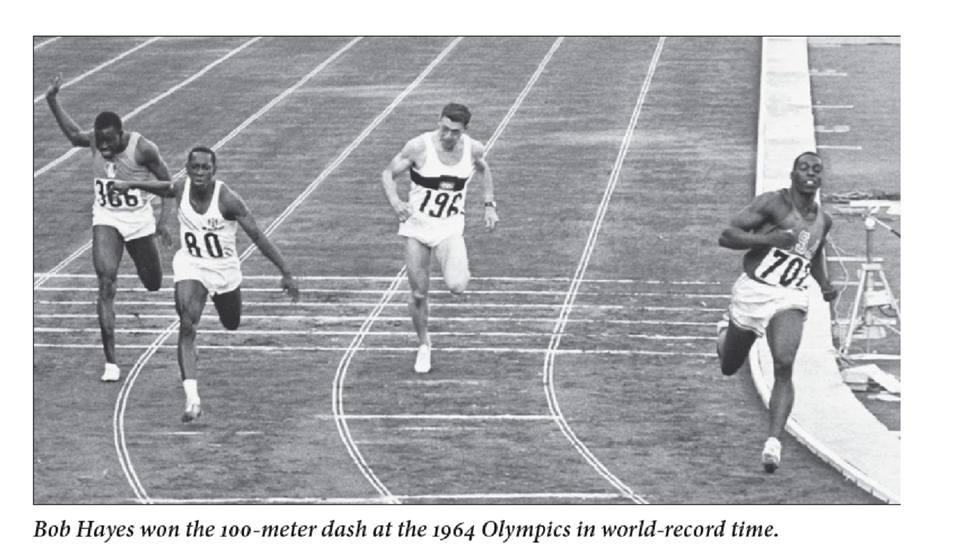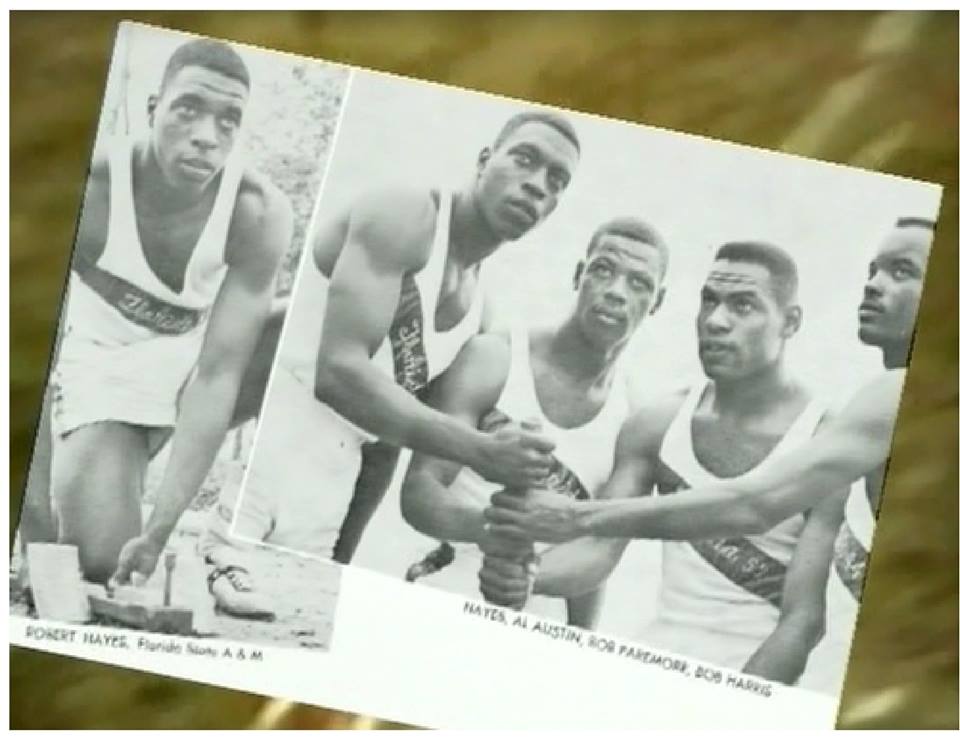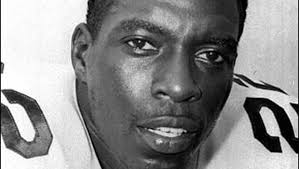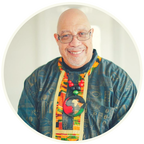|
A Short Excerpt from my book, "Unless WE Tell It...It Never Gets Told!---Chapter 4...Bob "Crow" Hayes. I cannot talk and write enough about local Black Heroes who not only impacted Jacksonville and the State of Florida...BUT...Also this country! Bob Hayes is ONE of the Greats!
"Bob Hayes was the halfback on the 1958 Matthew William Gilbert High School football team, coached by Earl Kitchings, who saw his team finish with twelve wins and no losses to win the Black high school state championship of the Florida Interscholastic Athletic Association with a 14–7 victory over Dillard High School of Fort Lauderdale, and become the FIRST public high school to win a football championship in Jacksonville. In 2007, after fifty years of being shamefully overlooked because of Racism and Segregation, that 1958 team was finally recognized by the Florida High School Athletic Association (FHSAA), which proclaimed it as one of the best teams in state history and the best Florida football team of the 1950s. After graduating from Matthew William Gilbert in 1960, Bob Hayes attended Florida Agricultural and Mechanical University (FAMU) on a football scholarship. The halfback was Willie Galimore, who would later become a Chicago Bear. The quarterback was Charlie Ward, whose son, Charlie Ward Jr., would win the Heisman Trophy in 1993. The blocking fullback-tight end was Hewritt Dixon, later an Oakland Raider. Bob Hayes was a wingback in that vaunted backfield of celebrated coach Alonzo “Jake” Gaither, though he also took the field as a halfback and a receiver. Bob played at FAMU from 1961 to 1964. He averaged an incredible 34.3 yards per return as a freshman in 1961, led the team with eleven touchdowns as a junior in 1963, led the team in punt returns in 1962 and 1963, and led the team in kickoff returns all four years. Bob’s excellent football skills were there and on display in college, but it was his blazing track prowess that would make him legendary. Bob Hayes was the first person to break six seconds in the 60-yard dash with his indoor world record of 5.9 seconds. In 1962, at a collegiate track meet in Miami, Hayes ran a new world record of 9.2 seconds for the 100-yard dash. In 1963, he broke his own record with a time of 9.1. He was the AAU 100-yard dash champion three years running, from 1962 to 1964, and in 1964 was the NCAA champion in the 200-meter dash. The FAMU 400-meter relay team of Robert Hayes, Robert Paremore, Robert Harris, and Alfred Austin would run the fastest time in the collegiate division in 1962 and 1963. Alfred Austin, a legend in his own right, refers to the team as, “three Bobs and an Al.” In the 1964 Olympics in Tokyo, Japan, Bob won the 100-meter dash going away, in world-record time. This was an extraordinary achievement against the world’s best sprinters. Yet his greatest race—and arguably the greatest anchor leg in the history of the Olympic Summer Games—came a few days later, when Bob ran the anchor leg for the United States in the 4 x 100 relay. When Bob got the baton, the U.S. team was in sixth place, nearly six yards out of the lead. He took the baton from Dick Stebbins in the passing zone about five yards sooner than usual, and 112 yards from the finish line. The man they proclaimed the “World’s Fastest Human” had a mini United Nations in front of him. First, he had to catch Jamaica. Then Russia, Poland, France. Never mind winning the 4 x 100 relay—Hayes was worried about getting any medal for the United States. But Bob Hayes, in the words of one observer, “exploded down the track in an eruption of speed never witnessed before or since.” He blew past the field in about forty yards and went on to cross the finish line more than three yards clear of the nearest competitor, for a new world record of 39.0 seconds for the 4 x 100 relay. In that anchor leg, he had caught some of the finest sprinters in the world, and one of track and field’s great debates is over how fast Hayes really ran that day. Track officials gave various estimates for his time, the slowest being 8.9 seconds but most being at 8.6 and 8.7. Hayes removed any doubt about which athlete would come to define speed for future generations. Ralph Wiley, the revered sports columnist, would write, “The Bullet Man was behind five relay teams when he got the baton on the anchor leg of the 4 x 100-meter relay final in Tokyo. He made up nine meters on the field. Nine meters! He ran his leg in 8.6. That’s not running. That’s teleportation. That’s Star Trek.” Bob was drafted by the Dallas Cowboys and immediately made NFL team defenses change from "man-to-man" to "zone" JUST to cover him. When the Cowboys won the 1972 Super Bowl, Bob Hayes became the only person in the history of sports to have won BOTH an Olympic gold medal --2 in fact-- and a Super Bowl championship ring." He still holds that distinction. Bob passed in 2002 and was posthumously inducted in the NFL Hall of Fame in 2009. When you say Jacksonville, Florida, the next words out of your mouth should include, "Hometown of Native Son, Bob Hayes. He changed the game of professional football!"
1 Comment
Kevin Gault
1/26/2020 03:22:22 pm
I have a 1962 FAMU yearbook. Evidently there arent many on the market. Excellent photos of FAMU sports and academics activities. Great photos and articles on Bob Hayes. I'd love a signed copy of your book. Pls send me contact info and total price. Thanks
Reply
Leave a Reply. |
AuthorRodney. L. Hurst, Sr. Archives
June 2024
Categories |
RODNEY L. HURST, SR. - THE STRUGGLE CONTINUES!




 RSS Feed
RSS Feed
